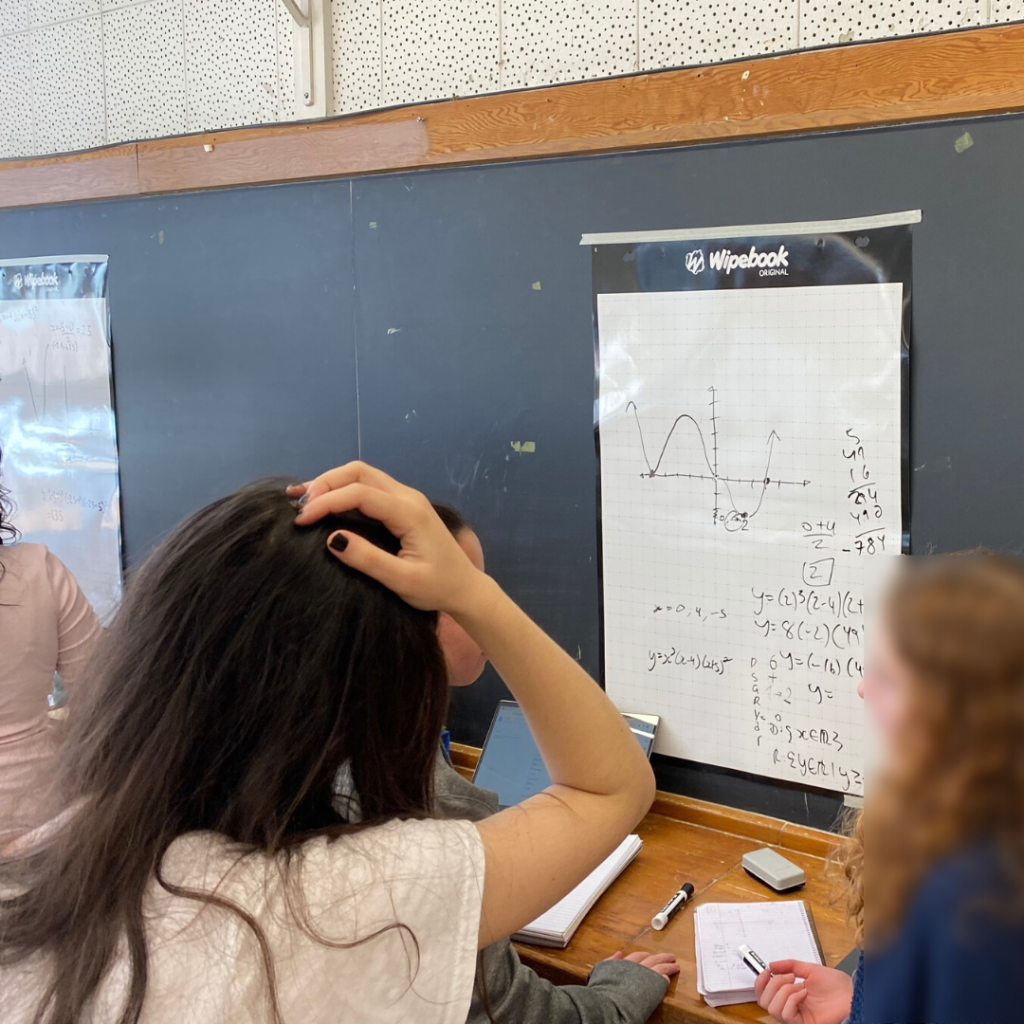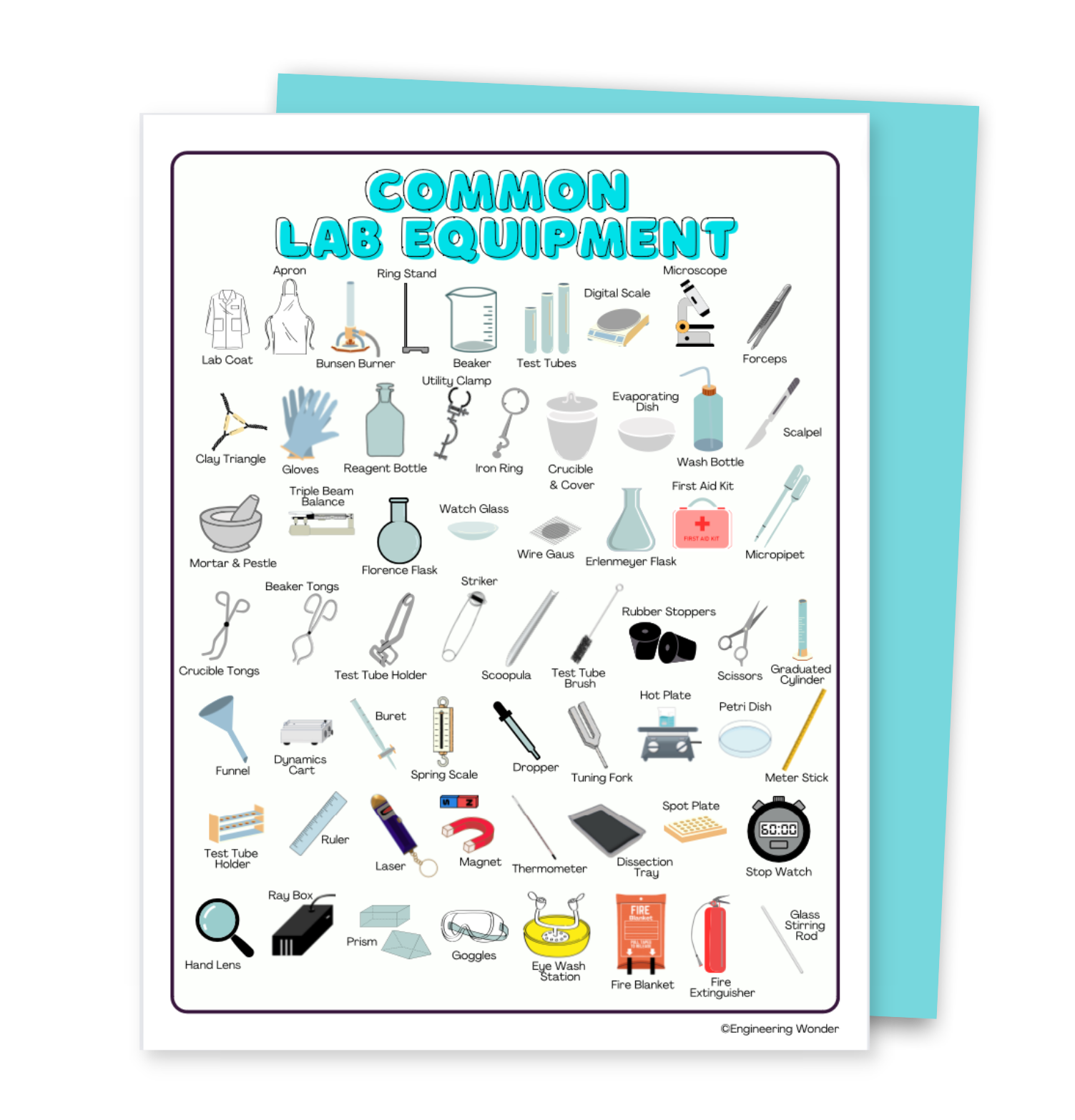Okay, so if your school hasn’t had any PD on building Thinking Classrooms yet, you likely will at some point. Building Thinking Classrooms in Mathematics is a book written by Peter Liljedahl where he outlines specific strategies to help foster thinking skills in students and as a result, improve learning outcomes.
Well I’ve been implementing some of these strategies in my own classroom for a little over a year now and I’m going to share some of the strategies I’ve used and my own thoughts on how things have been going. So if that sounds interesting, stay with me and let’s unpack some of this together.

Pictured above are some of my students working on a task based on the principles I’m going to talk about here. What do you see when you look at this picture? Do students seem engaged? Do they appear to be working collaboratively? This is of course what we want, but how do we achieve this and how do we sustain it all semester long?
- Choosing the Right Task
The first thing we want to do is select the right task. A task that captures your students attention–a problem they feel like they just have to solve. You also don’t want the problem to be too straight forward. Students should have to do some thinking afterall. Think zone of proximal development. To do this, you’ll need to first build a culture in your classroom of engaging in thinking tasks regularly and non-curricular tasks are best in the beginning. Later on, once you’ve had some practice you can transition over to curriculum tasks.
Tasks can be short at first (5 min), but may take longer and it’s best to jump into them within the first 5 min of the lesson in order to harness as much energy from your students as you can.
When beginning a thinking task with students, I always begin by getting them standing and into their groups at the ready before I describe the problem. Once everyones in place, I project the question up on the board in BIG BOLD PRINT and then I read it to the class out loud. At this point they’re off and running to solve the question.
- Forming Groups
I’m going to keep this one short and simple. When it comes to forming groups, you’ll want to randomize group formation and three students per group is the magic number. This is an important one I quickly discovered. If you don’t do this step, what will happen is students will fall into roles where some students sit back passively learning, but NOT thinking, while one person alone completes the task. This doesn’t accomplish our goal, which is to nurture these thinking skills in all our learners.
- Vertical Non Permanent Surfaces (VNPSs)
When I first started teaching I purchased a set of small hand held white boards to encourage discussion and facilitate group problem solving and think-pair-share. Remember that one? In this setting, we want to get students standing up and huddled around the VNPS together. This encourages students to all participate and you’ll notice yourself, that it’s harder for students to check out when you do this. VNPSs also encourage risk taking which is an essential skill in problem solving.
It also turns out that students will write more when working through the problem vertically. I don’t pretend to know why that is, but if more writing translates to sticking with a problem longer then I’m for it.
- Use Seating to Promote Thinking
Stoking your students’ interest in problem solving can also be aided by strategically arranging desks into pods. So for example, in my classroom I have desks grouped in formations of four, where desks face one another. They refer to this as de-fronting your classroom and it was shown to help cultivate that thinking classroom that we’re after, as opposed to passive learning. From my own experience, putting students into pods like this absolutely works for encouraging discourse between students. It also helps set the stage for working collaboratively throughout the class.
- Mobilizing Knowledge
One of the beautiful things you’ll notice when you begin doing these tasks with your class as I’ve described above, is that students will begin to learn from others without any coaxing from you. And not just from the students in their group, but also from students on the other side of the room. WE WANT THIS. This is fantastic! As the teacher, I really get excited to see knowledge flow this way as students look around and then have those ah-ha moments as they look around and spot something that will help them stay in flow (i.e., continuing to think and problem solve).
The first few times you have students completing a task, verbally give them permission to look around. Some students feel they shouldn’t because they think of peaking at others’ work as cheating, which in this context it absolutely isn’t. The objective here is not to make students feel that this is an evaluation. We are learning for the sake of learning and collaboration is encouraged.
- Keep Groups in Flow
This is the last strategy I’m going to share and it’s an important one. Any teacher knows exactly what I’m talking about when I describe the following scenario. Oftentimes when you have students working on a problem, whether it be for a formal assessment or only for practice, you will get questions like “is this right?”. This is kryptonite to building a thinking classroom. This has the potential to stop thinking in the classroom.
In this situation, the student has hit a dead end and is looking for you to give over the answer. In this situation we should instead find ways to keep the student thinking. Providing hints or extension questions to keep the group problem solving. This will ultimately be far more satisfying to students in the end and it will promote a culture of perseverance and collaboration in the classroom.
I hope you were able to find a few strategies to implement right away, or maybe all of them if you feel daring to jump right in. I hope you will and as always, I hope to hear from you. I’d love to see how things went in your classroom.

THANKS FOR STOPPING BY
I'm so glad to have you here! Since 2010 I've been in the classroom as a Math and Science teacher at the high school level. I am excited to share some of my journey with you, along with helpful resources and ideas you can implement that will make your life easier.

Featured Resource
Digital Multimeters - How to Measure Resistance, Voltage & Current

FREE RESOURCE!
Interested in grabbing this common lab equipment quick reference handout? Great resource for your students to refer to throughout the course to get to know common tools in the lab.
